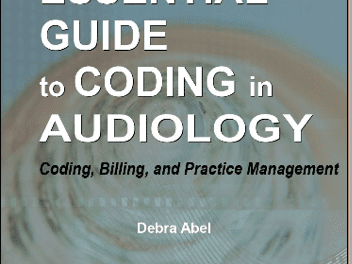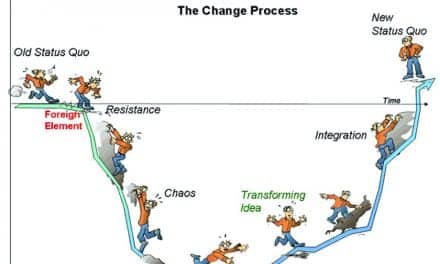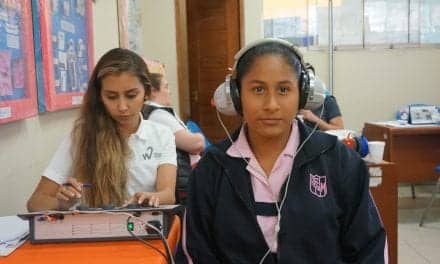
|
| Vishakha W. Rawool, PhD, is a member of the faculty in the Department of Speech Pathology and Audiology at West Virginia University, Morgantown, WVa. |
With aging, individuals experience a decreased ability to recognize speech, even when they have normal hearing acuity. This difficulty is more obvious when the speech is presented at a fast rate or is presented in the presence of competing signals. Two of the possible underlying mechanisms for poor speech recognition in older individuals include reduced speed of signal processing within the auditory pathways and/or reduced cognition. Parts 1 and 2 of this series of articles presented evidence showing slower processing within the higher auditory pathways and its relationship to speech recognition.1,2
Age-related changes in brain structure and function may contribute to poor sensory and cognitive function. Alternatively, cognitive declines may be a consequence of degraded auditory processing, causing sensory deprivation. Thus, a complex inter-relationship among speech recognition, cognitive performance, and slower processing can be expected. Part 3, the final article in the series, examines this complex inter-relationship. An in-depth understanding of these relationships can be expected to lead to more effective aural rehabilitation services for older individuals.
Aging and Physiological Changes
Slower signal/neural transmission time due to age. Birren3 proposed that one of the most marked changes in old age is a general slowing of the rate of information processing. Continuous inputs of signals at fast rates are difficult for older people to process efficiently. (For a more detailed discussion, see Part 2 of this series.2)
Physiological bases for general slowing in the aging central nervous system. Using magnetic resonance imaging, Sowell et al4 found a significant decline in grey matter density with age. Birren et al5 noted that reduction in synaptic density with age appears to come close to a reliably observed change that would slow the transmission of neurophysiological excitation. They suggested that this reduction could influence several key areas, such as the dentate gyrus of the hippocampus, which is associated with learning and memory. White matter lesion prevalence measured with MRI scans also appears to account for the age-related variance among individuals in tests of speed and executive ability.6
Another key set of nuclei that may be relevant are in the reticular system. The reduction in cells in the human locus ceruleus reported with age has potentially great significance for behavior. As part of the ascending reticular system, the locus ceruleus influences the level of excitation of the cerebellum, cerebrum, and limbic system. Such a nucleus could play a central role in the slowing of behavior with age.5
Several other effects of aging can distress the central nervous system. The rate of cerebral blood flow diminishes with age, perhaps due to arteriosclerosis.7 Conde and Streit8 suggested that the function of the microglia cells deteriorates with aging, and this may lead to neurodegeneration observed in the aging brain. Based on a review of the literature, Segovia et al9 reported that the most significant and consistent finding in aging is the decrease in the density of glutameatergic NMDA receptors—thought to play a critical role in synaptic plasticity—with age.
The suprachiasmatic nucleus (SCN) of the hypothalamus is considered to be a type of biological clock that governs circadian (hormonal rhythms, body core temperature, sleep/wakefulness) time-keeping. The age-related decrements in circadian cycles and the neuronal degeneration of the SCN suggest disturbance of the circadian pacemaker in the human brain with aging.10
In summary, several changes have been reported in the aging auditory system. Any of the above listed changes can lead to general slowing of behavior and/or lower cognition with aging.
Aging and Speech Recognition
Older adults have difficulty recognizing time-compressed or fast speech. In Part 1 of this series,1 investigations were reviewed that suggest there is an age-related decline in the rate of information processing which makes it difficult for older listeners to understand rapid speech.
Aging and Cognitive Changes
Generally speaking, the concept of cognition can include attention, memory, perceptual speed, response time, problem solving, and mental imagery. Decline of cognitive performance in older individuals has been reported in several investigations.11,12
One way to examine the effect of aging on cognition is to consider two types of intelligence: crystallized and fluid. Crystallized intelligence can be conceptualized as the storage area of information that is learned and accumulated through the years, such as content knowledge and facts. In contrast, fluid intelligence refers to the ability to solve problems with novel applications of knowledge.13
Typically, crystallized abilities tend to remain high and stable from young adulthood through old age, whereas fluid abilities plateau during the years of midlife and show declines around age 70.14 Thus, complex tasks that require taking in new information and analyzing it may become more difficult. The declines in fluid intelligence may be related to deficits that occur in memory, attention and speed of processing with aging.
The process that allows us to temporarily store and manipulate information is referred to as working memory. Working memory has been shown to decline with aging.15
Difficulties in the allocation and maintenance of attention with aging have been reported.16,17 Normal aging results in loss of attentional capacity.18-20 Deficits are more obvious under circumstances of high attentional demands.18,21-23
Aging reduces the speed with which incoming information is processed.24,25 Evidence suggests that there are decreases in sensory-motor speed, perceptual speed, and reaction time with age.26 Reaction time is the amount of time it takes to react to stimuli, and it varies with the complexity of the task and the expected response. When reaction time is used to study the “timeliness” in cognitive functions, older individuals appear to be on average slower than younger adults, irrespective of the task or the experimental procedure.27
Slower Processing, Lower Cognition, and Poor Speech Recognition
Slower processing due to the deterioration in the central nervous system typically associated with aging could lead to simultaneous decline in cognition and speech recognition abilities. For example, in Alzheimer’s disease, impaired central auditory function is correlated with temporal lobe atrophy and cognition.28
In addition, lower cognition can lead to poor speech recognition due to inefficient top-down processing of incoming speech stimuli. For example, the individual may have difficulty filling in missing elements using contextual cues. On the other hand, poor speech recognition may lead to lower cognition due to deficient sensory input (Figure 1).

|
| FIGURE 1. The hypothesized relationship between slower processing, lower cognition, and poor speech recognition. |
The relationship between slower neural processing and cognition. Ertl29 reported a significant correlation between IQ and the visual evoked potential. The activity in the latency range from 11 to 136 msec was found to be greater in individuals with higher IQ when compared to those with lower IQ.30
Based on a carefully controlled study of healthy adults, Duffy et al31 concluded that lower cognitive function is associated with longer evoked potential latencies, suggesting slower neural processing. They suggested that shorter evoked potential latencies associated with higher cognitive function might reflect better synaptic efficiency, which may be determined by the number of synapses, ratio of excitatory to inhibitory synapses, and neuromodulatory influences.
Geisler et al32 examined the relationship between the P300 and slow wave components of the olfactory event-related potential (OERP) with neuropsychological performance in young and elderly adults. Results showed that P3 latencies decline with age and this decreased neuronal efficiency was associated with reduction in neuropsychological performance indexed by the California Verbal Learning Test.
Jones et al33 similarly showed a correlation between cognitive flexibility and auditory evoked potentials. Collectively, these studies show a correlation between lower cognition and slower neural processing (as reflected in longer latencies of evoked potentials). Perhaps many of the benign effects of age on cognitive function could be accounted for by accumulations of latency prolongations across various stages of information processing.
Relationship between processing within the auditory pathways and speech recognition. Rawool1,2 reviewed various studies that show slower neural transmission in the auditory pathways and studies that show correlations between slower processing within the auditory pathways and speech recognition. Speech recognition may be associated with the latencies of the auditory brainstem response,34 the middle latency response,35 the auditory late response,36 the P300,37 and the acoustic reflex.38
Cognition and Speech Recognition
With reference to speech recognition, cognitive processing involves cortical function and is dependent on world knowledge, word dictionary saved in the memory, access to this memory, efficient retrieval, conceptual representation of the word, and use of situational or contextual cues to recognize the word. The extent to which previous experiences can be helpful in recognizing incoming stimuli is governed by complex cognitive processes such as memory and recall of previously learned information (eg, words and phrases) and problem solving or being able to make use of the context to correctly recognize misunderstood words or being able to fill in inaudible words.
A significant correlation between speech recognition ability for complex speech tasks and tests of cognitive capacity (digit span, arithmetic, block design and verbal fluency) has been reported.39 Thomas et al40 evaluated the relationship between speech recognition and cognition in 239 physically healthy, independent-living elderly men and women with a mean age of 72 years. Participants were given the Speech Perception in Noise (SPIN) test, which consists of 50 short sentences spoken in a background of voice babble (multitalker noise). Participants were asked to repeat the last monosyllabic word occurring at the end of each sentence. SPIN scores were correlated with the overall cognitive scores on the Jacobs cognitive screening examination, and specifically, the recall subsection of the cognitive screening examination, which tests the ability to recall four words after 3 minutes.
The ability to understand fast speech is partially dependent on the ability to quickly recall and recognize patterns (eg, words) stored in the memory. As stated above, age-related deficits in memory can affect speech recognition.40 Van Rooij and Plomp41 also reported that the speech recognition thresholds of older listeners can be partially predicted by reduced memory.
Understanding fast speech requires rapid processing of continuous input without missing any elements, and memory for the earlier portions of the message must resist interference caused by the later parts of the message. In addition, if any elements are missed due to poor audibility or distortion, the missed elements must be manipulated to construct a cohesive picture of the message. Such manipulations are dependent on an efficient working memory, which is reduced with aging.
With aging, it takes longer to look up a word name and category in semantic memory.42 Van Rooij and Plomp43 concluded that the most important cognitive correlates of speech-perception performance may be processing and sensorimotor speed. Jerger, Jerger, and Pirozzolo,44 in a study involving 200 elderly subjects, demonstrated that the performance on the dichotic sentence identification (DSI) procedure that requires the subject to identify two sentences presented simultaneously to each ear, is partially related to the speed of mental processing as measured by the Digit Symbol subtest of the revised Wechsler Adult Intelligence Scale (WAIS-R).
To accurately perceive rapid speech, it is necessary to sustain attention. It is also necessary to divide attention between continuous monitoring of the incoming stimuli and analyses and integration of the successive elements. Thus, age-related deficits in attention could have an effect on speech recognition.
It should be noted that some studies may fail to show any relationship between cognition and speech recognition if simple speech stimuli are used that are less demanding than those typically encountered in everyday natural communication environments.45 Birren and Fisher46 suggested a hierarchical notion of the effects of slowing. The speed-knowledge continuum predicts that, if the task involves primarily speed (eg, fast speech), then age effects are expected to be large. If the task is primarily based on knowledge or crystallized intelligence, the age effects can be expected to be small.46
Decreased hearing due to aging may cause poor speech recognition, which in turn may impair abilities to receive or integrate environmental information correctly. Decrease in input and incorrect input of information could produce irreversible cognitive deficits similar to disuse atrophy. For example, such sensory deprivation mechanisms have been used to explain the increased prevalence of paranoid psychosis in subjects with hearing loss.47
Summary and Implications for Aural Rehabilitation in Older Adults
Speech-recognition deficits in older individuals appear to be interrelated to slower processing within the aging auditory system, general slowing within the central auditory system, and/or cognitive declines (Figure 1). Depending on the particular deficits present, the most effective aural rehabilitative efforts for older individuals should address the following aspects:
- Amplification. Hearing aids and/or assistive listening devices can compensate for sensory deprivation caused by hearing loss and can deliver a clearly audible signal so that demands on available cognitive resources can be reduced.
- Auditory training. Auditory training has the potential for improving neural timing in the auditory brainstem.48
- Training designed to improve speed of processing. Hertzog et al49 studied practice effects on the central perceptual processes and reported improvement in performance with practice. Response speed can also increase significantly with training in older individuals.50 Individuals can improve their processing speed at home using readily available technology, such as a videotape or CD-based speed-of-processing training protocol.51 Training can also improve simultaneous processing of two tasks in older adults.52
- Training to improve cognition. Mahncke et al53 demonstrated an enhancement in cognitive function in older adults following intensive plasticity-engaging training. Other studies have shown improvements in cognitive function in older adults with training.54,55
- Training in the use of contextual cues. Older individuals can use contextual cues to overcome the difficulty in recognizing fast speech.56 Thus, training in the use of contextual cues may be helpful for those individuals who are not using contextual cues effectively.
- Encouraging healthy habits. Earles and Salthouse57 demonstrated that the relationship between age and speed is partially mediated by health. Birren et al5 noted that structural changes are adaptive to the activity level of the nervous system. It has been hypothesized that the maintenance of aerobic capacity through regular physical activity ensures an adequate delivery of oxygen to the nervous system and an attenuated deterioration in psychomotor performance. Exercise appears to be effective in reversing or at least slowing some age-related reduction in speed of cognitive processing.58 Based on a review of literature, Dishman et al59 concluded that voluntary physical activity and exercise training could favorably influence brain plasticity by facilitating neurogenerative, neuroadaptive, and neuroprotective processes. Thus, whenever possible, sedentary older individuals should be encouraged to engage in exercise with guidance and supervision from the physician.
References
- Rawool VW. The aging auditory system, Part 1: Controversy and confusion on slower processing. Hearing Review. 2007;14(7):14-19.
- Rawool VW. The aging auditory system, Part 2: Slower processing and speech recognition. Hearing Review. 2007;14(8):36-43.
- Birren JE. Toward an experimental psychology of aging. Amer Psychol. 1970;23:124-135.
- Sowell ER, Peterson BS, Thompson PM, Welcome SE, Henkenius AL, Toga AW. Mapping cortical change across the human life span. Nat Neurosci. 2003;6:309-315.
- Birren JE, Woods AM, Williams MV. Behavioral slowing with age: causes, organization and consequences. In: Poon LW, ed. Aging in the 1980s: Psychological Issues. Washington, DC: American Psychological Association; 1980.
- Rabbitt P, Scott M, Lunn M, et al. White matter lesions account for all age-related declines in speed but not in intelligence. Neuropsychology. 2007;21:363-370.
- Duara R, London ED, Rapoport S. Changes in structure and energy metabolism of the aging brain. In: Finch CE, Schneider EL, eds. Handbook of the Biology of Aging. New York: Van Nostrand Reinhold; 1985:595.
- Conde JR, Streit WJ. Microglia in the aging brain. J Neuropathol Exp Neurol. 2006;65:199-203.
- Segovia G, Porras A, Del Arco A, Mora F. Glutamatergic neurotransmission in aging: a critical perspective. Mech Ageing Dev. 2001;122:1-29.
- Hofman MA, Swaab DF. Living by the clock: the circadian pacemaker in older people. Aging Res Rev. 2006;5:33-51.
- Salthouse TA. A Theory of Cognitive Aging. Amsterdam: North-Holland; 1985.
- Dore GA, Elias MF, Robbins MA, Elias PK, Brennan SL. Cognitive performance and age: norms from the Maine-Syracuse Study. Exp Aging Res. 2007;33: 205-271.
- Ackerman PL, Rolfhus EL. The locus of adult intelligence: knowledge, abilities and nonability traits. Psychol and Aging. 1999;14:314-330.
- Schaie KW. What can we learn from longitudinal studies of adult development? Res Hum Dev. 2005;2:133-158.
- Hedden T, Gabrieli JDE. Insights into the ageing mind: a view from cognitive neuroscience. Nat Rev Neuro. 2004;5:87-97.
- Broadbent DE, Heron A. The effects of a subsidiary task on performance involving immediate memory by younger and older men. Br J Psychol. 1962;53:198.
- Rabbitt PM, Birren JE. Age and responses to sequences of repetitive and interruptive signals. J Gerontol. 1967;22:143-150.
- Parasuraman R, Giambra L. Skill development in vigilance effects of event rate and age. Psychol Aging. 1991;6:155-169.
- Greenwood PM, Parasuraman R, Alexander GE. Controlling the focus of spatial attention during visual search: effects of advanced aging and Alzheimer’s disease. Neuropsychology. 1997;11:3–12.
- Berardi A, Parasuraman R, Haxby J. Overall vigilance and sustained attention decrements in healthy aging. Exp Aging Res. 2001;27:19–39.
- Parasuraman R, Warm JS, Dember WN. Vigilance: taxonomy and utility. In: Mark LS, Warm JS, Huston, eds. Ergonomics and Human Factors. New York: Springer; 1987:11–32.
- Mouloua M, Parasuraman R. Aging and cognitive vigilance: effects of spatial uncertainty and event rate. Exp Aging Res. 1995;21:17–32.
- Georgiou-Karistianis N, Tang J, Vardy Y, et al. Progressive age-related changes in the attentional blink paradigm. Neuropsychol Dev Cogn B Aging Neuropsychol Cogn. 2007;14:213-226.
- Salthouse TA. The processing-speed theory of adult age differences in cognition. Psychol Rev. 1996;103:403-428.
- Salthouse TA. Aging and measures of processing speed. Biol Psychol. 2000;54(1-3):35-54.
- Earles JL, Salthouse TA. Interrelations of age, health and speed. J Gerontol B Psychol Sci Soc Sci. 1995;50:33-41.
- Baron A, Cerella, J. Laboratory tests of the disuse account of cognitive decline. In: Cerella J, Hoyer W, Rybash J, Commons M, eds. Adult Information Processing: Limits on Loss. San Diego: Academic Press; 1993.
- Grimes AM, Grady CL, Foster NL, Sunderland T, Patronas NJ. Central auditory function in Alzheimer’s disease. Neurology. 1985;35:352-358.
- Ertl JP. Brain response correlates of psychometric intelligence. Nature. 1969;223:421-422.
- Ertl JP. IQ, evoked reponses and Fourier analysis. Nature. 1973;241:209-210.
- Duffy FH, McAnulfy GB, Jones K, Als H, Albert M. Brain electrical correlates of psychological measures: strategies and problems. Brain Topogr. 1993;5:399-412.
- Geisler MW, Morgan CD, Covington JW, Murphy C. Neuropsychological performance and cognitive olfactory event-related brain potentials in young and elderly adults. J Clin Exp Neuropsychol. 1999;21:108-26.
- Jones KJ, Albert MS, Duffy FH, Hyde MR, Naeser M, Aldwin C. Modeling age using cognitive, psychosocial and physiological variables: the Boston normative aging study. Exp Aging Res. 1991;17: 227-242.
- Rawool VW. Speech recognition scores and ABR in cochlear impairment. Scand Audiol. 1989;18:1-5.
- Ali AA, Jerger J. Phase coherence of the middle latency response in the elderly. Scand Audiol. 1992;21:187-194.
- Sharma A, Marsh CM, Dorman MF. Relationship between N1 evoked potential morphology and the perception of voicing. J Acoust Soc Am. 2000;108:3030-35.
- Jerger J, Alford B, Lew H, Rivera V, Chmiel R. Dichotic listening, event-related potentials, and interhemispheric transfer in the elderly. Ear Hear. 1995;16:482-498.
- Mahoney T, Vernon J, Meikle M. Function of the acoustic reflex in discrimination of intense speech. Arch Otolaryngol. 1979;105:119-23.
- Era P, Jokela J, Qvarnberg Y, Heikkinen E. Pure tone thresholds, speech understanding, and their correlates in samples of men of different ages. Audiology. 1986;25:338-352.
- Thomas PD, Hunt WC, Garry PJ, Hood RB, Goodwin JM, Goodwin JS. Hearing acuity in a healthy elderly population: effects of emotional, cognitive and social status. J Gerontol. 1983;38:321-325.
- van Rooij JCGM, Plomp R. Auditive and cognitive factors in speech perception by elderly listeners, II: Multivariate analyses. J Acoust Soc Am. 1990;88:2611-2624.
- Petros TV, Zehr HD, Chabot RJ. Adult age differences in accessing and retrieving information from long-term memory. J Gerontol. 1983;38:589-592.
- van Rooij JCGM, Plomp R. Auditive and cognitive factors in speech perception by elderly listeners, I: Development of test battery. J Acoust Soc Am. 1989;86:1294-1309.
- Jerger J, Jerger S, Pirozzolo F. Correlational analysis of speech audiometric scores, hearing loss, age, and cognitive abilities in the elderly. Ear Hear. 1991;12:103-109.
- Sommers MS. Speech perception in older adults: the importance of speech-specific cognitive abilities. J Am Geriatr Soc. 1997;45:633-637.
- Birren JE, Fisher LM. Aging and speed of behavior: possible consequences for psychological functioning. Ann Rev Psychol. 1995;46:329-53.
- Berger KS, Zarit SH. Late-life paranoid states. Assessment and treatment. Am J Orthopsychiatry. 1978;48:528-537.
- Russo NM, Nicol TG, Zecker SG, Hayes EA, Kraus N. Auditory training improves neural timing in the human brainstem.Behav Brain Res. 2005;156:95-103.
- Hertzog CK, Williams MV, Walsh DA. The effect of practice on age differences in central perceptual processing. J Gerontol. 1976;31:428-433.
- Hoyer F W, Hoyer WJ, Treat NJ, Baltes PB. Training response speed in young and elderly women. Int J Aging Hum Dev. 1978-1979;9:247-253.
- Wadley VG, Benz RL, Ball KK, Roenker DL, Edwards JD, Vance DE. Development and evaluation of home-based speed-of-processing training for older adults. Arch Phys Med Rehabil. 2006;87:757-763.
- Bherer L, Kramer AF, Peterson MS, Colcombe S, Erickson K, Becic E. Training effects on dual-task performance: are there age-related differences in plasticity of attentional control? Psychol Aging. 2005;20:695-709.
- Mahncke HW, Connor BB, Appelman J, et al. Memory enhancement in healthy older adults using a brain plasticity-based training program: a randomized, controlled study. Proc Natl Acad Sci USA. 2006;103:12523-8.
- Gunther VK, Schafer P, Hlozer BJ, Kemmler GW. Long term improvements in cognitive performance through computer assisted cognitive training. A pilot study in a residential home for older people. Aging Ment Health. 2003;7:200-206.
- Ball K, Berch DB, Helmers KF, et al. Effects of cognitive training intervention with older adults: a randomized controlled trial. JAMA. 2002; 288:2271-2281.
- Wingfield A, Poon LW, Lombardi L, Lowe D. Speed of processing in normal aging: effects of speech rate, linguistic structure and processing time. J Gerontol. 1985;40:579-585.
- Earles JL, Salthouse TA. Interrelations of age, health, and speed. J Gerontol B Psychol Sci Soc Sci. 1995;50(1):P33-P41.
- Rikli RE, Edwards DJ. Effects of a three-year exercise program on motor function and cognitive processing speed in older women. Res Q Exerc Sport. 1991;62:61-67.
- Dishman RK, Berthoud HR, Booth FW, et al. Neurobiology of exercise. Obesity. 2006;14:345-356.
Correspondence can be addressed to HR or Vishakha Rawool at .





